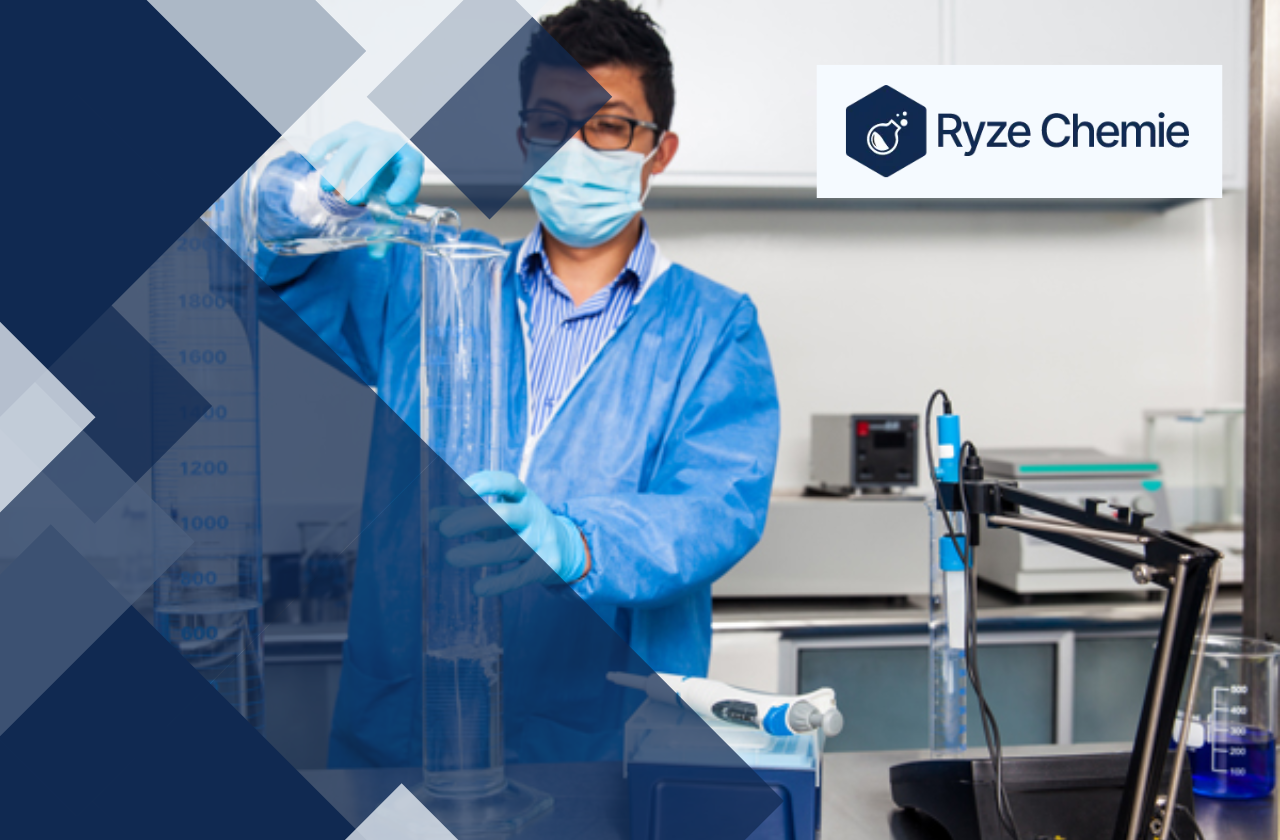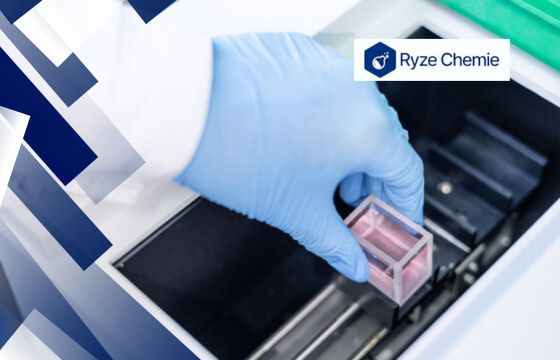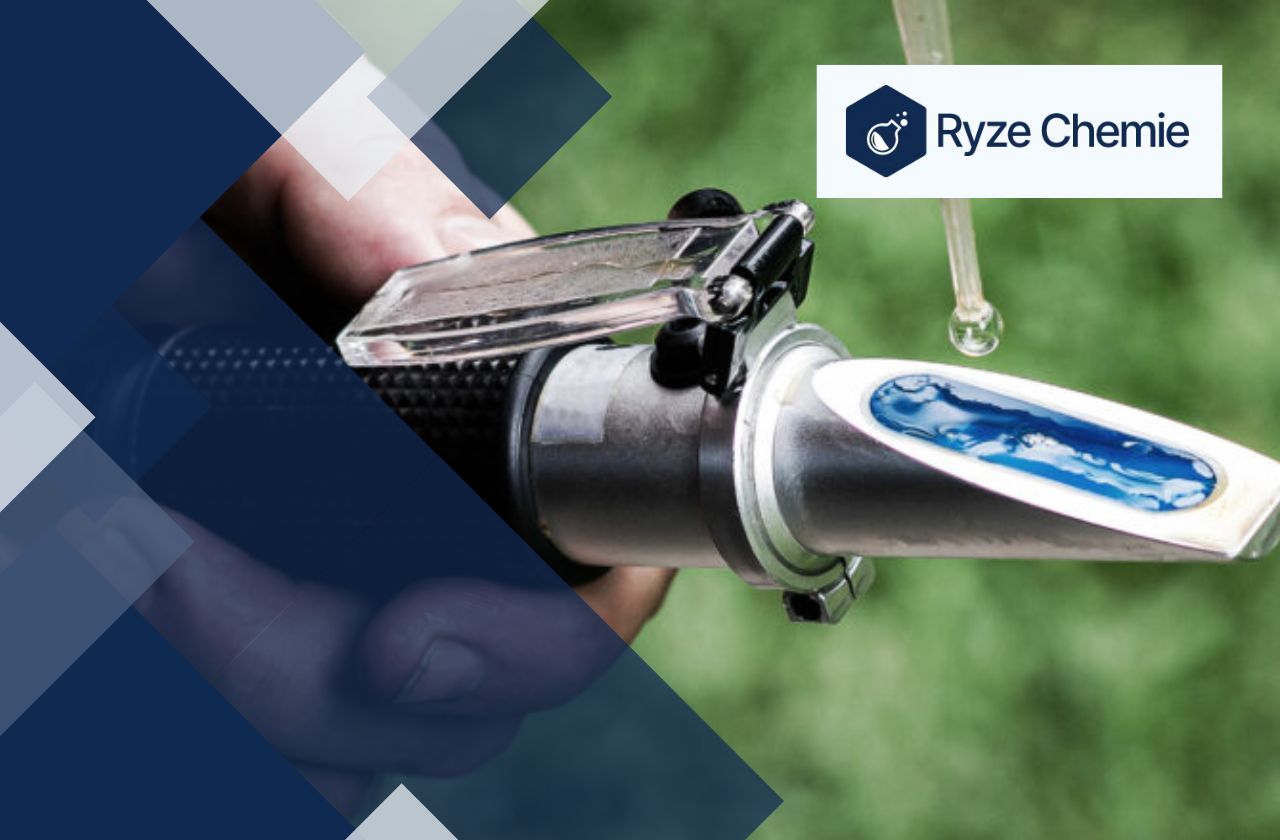
Stay up-to date on the
latest blogs. Join our
newsletter today!
This site is protected by reCAPTCHA and the Google Privacy Policy and Terms of Service apply.
How Do Buffers Resist Changes In pH? (2024)

Written by Team Ryze Chemie
13 mins read · Jun 14, 2024

Working with chemicals in the laboratory often involves dealing with changes in pH. Large fluctuations in pH can ruin experiments, damage equipment, and even pose safety hazards.
You need reliable ways to maintain stable pH levels in your solutions. Buffers provide the answer. They are special solutions that resist changes in pH, even when acids or bases are added.
This article explains how buffers work and how to use them effectively in your lab work. Understanding buffers will help you control pH and improve the accuracy and reproducibility of your experiments.
The Chemistry of Buffers
Buffers are made of weak acids and bases. These work together to resist changes in pH. We will now break down how this happens:
Components of a Buffer
A buffer is a dynamic duo of two chemical components:
1) A weak acid: This acid doesn't fully dissociate in water, meaning it only releases some of its hydrogen ions (H+).
2) Its conjugate base: This is the leftover part of the acid after it loses a hydrogen ion.
Alternatively, a buffer can be a weak base and its conjugate acid (the result of the base picking up a hydrogen ion).
Common Buffer Systems
Here are a few buffer systems you'll often find in the lab:
- Acetate buffer: Made from acetic acid and its conjugate base, acetate.
- Phosphate buffer: A versatile system with different combinations of phosphoric acid and its conjugate bases.
- Tris buffer: Popular in biochemical research due to its low toxicity.
The Buffer Equilibrium: A Balancing Act
Buffers work their magic through a delicate balancing act based on Le Chatelier's principle. This principle states that if you disturb a chemical system at equilibrium, it will try to counteract the change and restore balance.
Let's say you add some acid to a buffer solution. This increases the concentration of hydrogen ions, making the solution more acidic. The buffer's conjugate base jumps in, snatching up those extra hydrogen ions and forming more of the weak acid. This shifts the equilibrium, reducing the acidity and keeping the pH relatively stable.
The opposite happens if you add a base to the buffer. The weak acid steps up, donating hydrogen ions to neutralize the added base and maintain the pH.
The Henderson-Hasselbalch Equation: Predicting pH
Want to know the pH of your buffer solution? The Henderson-Hasselbalch equation is your go-to tool:
pH = pKa + log ([conjugate base] / [acid])
- pH: The measure of acidity or alkalinity.
- pKa: A constant that tells you how strong the weak acid is.
- [conjugate base] / [acid]: The ratio of the concentrations of the buffer components.
This equation reveals a key relationship: the pH of a buffer depends on the pKa of the weak acid and the ratio of the conjugate base to acid. If the concentrations of the two components are equal, the pH will be equal to the pKa.
We now know how buffers resist pH changes. But how strong is this resistance? The next section will explain buffer capacity.
Buffer Capacity
Buffer capacity is the amount of acid or base a buffer can neutralize before its pH changes significantly. Think of it like a sponge's ability to soak up water. The bigger and thicker the sponge, the more water it can hold. The same goes for buffers. A higher buffer capacity means a buffer can absorb more acid or base.
The buffer capacity depends on two main things:
- Concentration: The more buffer components you have, the higher the buffer capacity. It's like having a bigger sponge.
- Ratio of acid to conjugate base: The best buffer capacity happens when you have equal amounts of acid and its conjugate base. This is like having a sponge that's perfectly balanced.
Factors Affecting Buffer Capacity
Concentration: The higher the concentration of buffer components, the higher the buffer capacity. It's simple math: more molecules mean more acid or base can be neutralized.
pH Relative to pKa: The pKa of a weak acid is the pH where half of the acid is in its acidic form and half is in its conjugate base form. The closer the buffer's pH is to the pKa of the weak acid, the better the buffer capacity. This is because you have a good balance of acid and conjugate base to neutralize both added acid and base.
Importance of Choosing the Right Buffer
Choosing the right buffer is like choosing the right tool for the job. Different applications need different pH ranges and buffer capacities.
If you need a buffer for a reaction that produces a lot of acid, you'll want a buffer with a high capacity and a pH that matches the reaction's optimal pH. On the other hand, if you're working with a delicate enzyme that's sensitive to pH changes, you'll want a buffer with a lower capacity and a pH that matches the enzyme's optimal pH.
How to Choose the Right Buffer
- Determine the desired pH range: What pH does your reaction or experiment need to stay at?
- Consider the buffer capacity needed: How much acid or base is your reaction or experiment likely to produce?
- Look up pKa values: Find a weak acid with a pKa close to your desired pH.
- Calculate the buffer concentration: Use the Henderson-Hasselbalch equation to figure out how much acid and conjugate base you need to make your buffer.
Buffer capacity is important to consider when choosing a buffer. Now, let's explore how buffers are actually used in the lab.
Applications of Buffers in the Laboratory
Buffers have many uses in the lab. They keep reactions stable and protect sensitive chemicals. We will now look at some specific examples:
1) Maintaining pH Stability in Chemical Reactions
Some chemical reactions are very picky about pH. A tiny change can mess everything up! Buffers help keep these reactions happy and working well.
- Enzyme Assays: Enzymes are like tiny workers in our cells. They do important jobs, but only at the right pH. Buffers make sure the pH stays perfect, so enzymes can work their best.
- Protein Purification: Proteins are like building blocks for our bodies. We can separate and purify them in the lab, but pH changes can make them fall apart. Buffers protect proteins during this process.
- DNA Manipulations: DNA is like the instruction manual for our cells. We can cut, paste, and copy it in the lab, but pH changes can damage it. Buffers keep DNA safe while we work with it.
2) Calibration of pH Meters
pH meters are like thermometers, but they measure pH instead of temperature. To make sure they are accurate, we use buffers.
- Standard Buffer Solutions: These buffers have known pH values. We use them to check our pH meter and make sure it's reading correctly. It's like making sure your watch is set to the right time!
3) Preparation of Biological Media
Many living cells are used in labs for experiments. These cells are sensitive, just like us! They need the right pH to stay healthy.
- Physiological pH: This is the pH that cells are used to inside the body. Buffers help us make media (like food for cells) with the right pH. This keeps the cells happy and growing in the lab.
- Cell Culture: Cells can be grown in the lab, but they need the right conditions. Buffers help create these conditions by maintaining the correct pH for cell growth.
- Other Biological Experiments: Many other experiments in biology use living cells or tissues. Buffers are important in all these experiments to keep the pH stable and the cells healthy.
Buffers are clearly very useful tools. But how do we choose the right one? The next section will guide you through this process.
Choosing and Preparing Buffers
The right buffer depends on your needs. There are many options to choose from. We will discuss how to make this choice and prepare your buffer solution.
Considerations for Selecting a Buffer
The right buffer can make all the difference in your experiment's success. Here's what you need to keep in mind:
- Desired pH Range: Buffers work best within a specific pH range. This range is usually one pH unit above and below the buffer's pKa value. The pKa is a measure of the buffer's acidity. Choose a buffer with a pKa value close to your desired pH to get the most effective buffering action.
- Required Buffer Capacity: Buffer capacity refers to how well a buffer resists pH changes when an acid or base is added. The higher the concentration of the buffer components, the greater the buffer capacity. Consider how much acid or base you might add to your solution and choose a buffer with enough capacity to handle it.
- Compatibility with Other Reagents and Experimental Conditions: Some buffers can interact with other chemicals in your solution, forming precipitates or interfering with reactions. Additionally, factors like temperature can affect a buffer's performance. Always check that your chosen buffer is compatible with all other components of your experiment and the conditions under which you'll be working.
Methods for Preparing Buffers
Once you've chosen the right buffer, it's time to prepare it. There are a few different ways to do this:
- Weighing and Dissolving Solid Components: This method involves weighing out the appropriate amounts of the acid and its conjugate base (or a salt of the conjugate base) in solid form. You then dissolve these components in water to make your buffer solution. It's a straightforward method, but it requires accurate weighing and calculations.
- Mixing Stock Solutions of Acid and Conjugate Base: If you have stock solutions of the acid and its conjugate base, you can mix them in the right proportions to create your buffer. This method is often quicker than weighing out solids, but it requires that you know the concentrations of your stock solutions.
- Using Commercially Available Buffer Tablets or Powders: This is the most convenient method, especially for common buffers. Buffer tablets or powders contain pre-measured amounts of the acid and its conjugate base. You simply dissolve them in water to create your buffer solution. This method is quick and easy, but it may be more expensive than preparing buffers from scratch.
Now you can choose and prepare a buffer. But things can still go wrong. The next section helps you fix problems that may come up.
Troubleshooting Buffer Problems
Buffers can sometimes not work as expected. This section will cover common problems and how to solve them.
Common Issues with Buffers
- Incorrect pH: The pH of your buffer might not match what you need. This can happen if you made a mistake while preparing the buffer, or if the chemicals in the buffer have changed over time.
- Insufficient Buffer Capacity: Buffers can only handle so much acid or base before they lose their effectiveness. If you add too much, the pH will change. This can ruin your experiment.
- Contamination or Degradation: Chemicals in your buffer can get contaminated with other substances or break down over time. This can mess up the buffer's pH or make it less effective.
Strategies for Identifying and Resolving Buffer Problems
1) Check Your pH Meter: Your pH meter is your most important tool for checking buffers. Make sure it's working properly. If the meter isn't calibrated correctly, it won't give you accurate readings.
2) Adjusting Buffer Concentration or pH:
- If the pH is too high: You can carefully add a small amount of acid to lower it.
- If the pH is too low: Add a small amount of base to raise it.
- If the buffer capacity is too low: You might need to make a new buffer with a higher concentration of the buffering chemicals.
3) Make Fresh Buffer Solutions: Buffers don't last forever. If your buffer is old, it might not work well. It's always best to make a fresh buffer solution for important experiments.
Important Tip: Always label your buffer solutions with the date you made them. This helps you track how old they are.
With these troubleshooting tips, your buffers should work well. But always remember safety first. The next section will cover important safety points.
Safety Considerations
Chemicals can be dangerous. This includes buffers. This section will review important safety rules to follow when working with buffers:
1) Proper Handling and Storage of Buffer Components
Buffer components often come in powdered or concentrated liquid forms. When handling powders, use a spatula or scoop to avoid direct contact with skin. Always wear gloves and a lab coat to protect against accidental spills or splashes.
Store buffer components in their original containers with tightly sealed lids. Label each container clearly with the chemical name, concentration, and date of preparation. Keep containers in a cool, dry place away from direct sunlight or heat sources.
For liquid buffer concentrates, avoid pouring directly from large containers. Instead, use a graduated cylinder or pipette to measure the required amount. This minimizes the risk of spills and contamination.
2) Potential Hazards Associated with Specific Buffer Chemicals
Some buffer components have inherent hazards that require special attention. For example, Tris base can be irritating to the skin and eyes. Wear gloves and goggles when handling Tris base, and avoid breathing in the dust.
Other buffer chemicals, such as sodium azide, can be highly toxic. Use caution when working with sodium azide, and always wear gloves and a lab coat. If accidental ingestion or skin contact occurs, seek medical attention immediately.
Always refer to the Safety Data Sheet (SDS) for each buffer component before handling. The SDS provides detailed information on hazards, safety precautions, and emergency procedures.
3) Importance of Wearing Appropriate Personal Protective Equipment (PPE)
Wearing appropriate PPE is crucial when working with buffers. Gloves, lab coats, and safety goggles are essential to protect against accidental spills, splashes, or contact with hazardous chemicals.
Choose gloves that are resistant to the specific buffer chemicals you are using. Nitrile gloves are generally a good choice for most buffer solutions. However, consult the SDS to determine the most appropriate glove material.
Lab coats protect clothing from contamination and spills. Ensure the lab coat is buttoned up and sleeves are long enough to cover your arms.
Safety goggles shield your eyes from splashes and airborne particles. Choose goggles that fit snugly and provide adequate protection for the sides of your face.
Conclusion
Buffers are essential tools in maintaining stable pH levels in laboratory work. They are like chemical sponges, soaking up excess acid or base to keep the pH consistent. This is crucial in many chemical reactions, where even small pH changes can drastically alter results.
Understanding how buffers work helps us to choose the right buffer for the job, ensuring accurate and reliable experiments. This knowledge translates to safer practices and better quality research in the lab.
Latest Blogs








